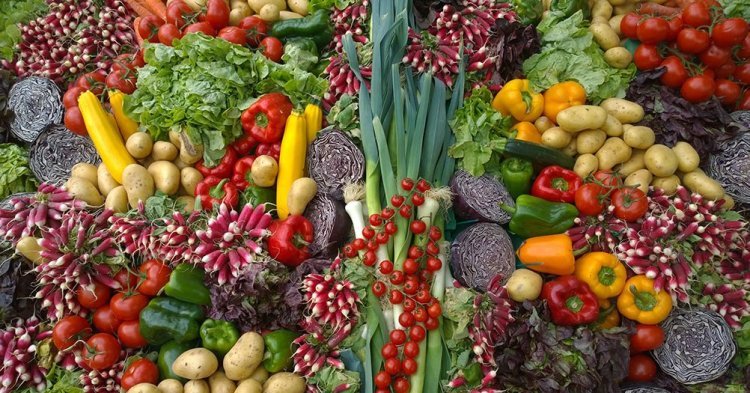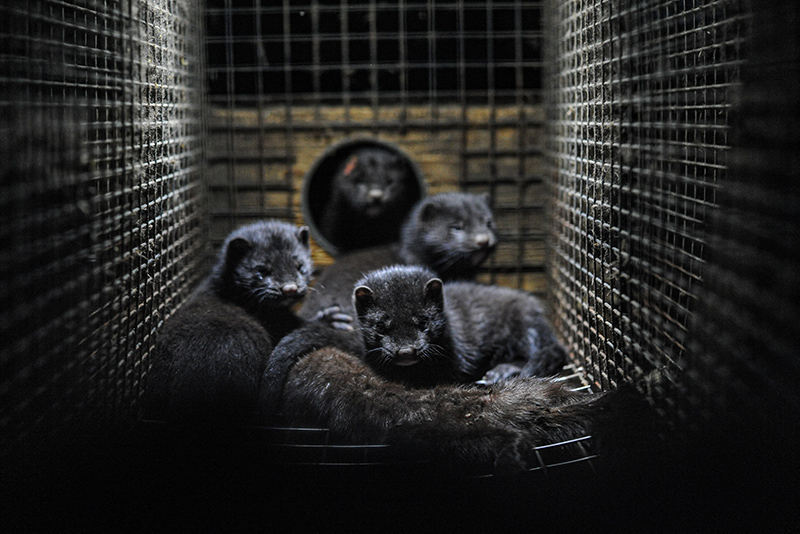The Common Agricultural Policy (CAP) has been central to the European project for more than 50 years. CAP has served European farmers and consumers alike and allowed the food sector to flourish, turning Europe from a net importer to a net exporter of agricultural products. However, the price for intensive production was paid by environmental degradation and excessive consumerism, buying more than we need for less than we value the environment. The structure of CAP did not go far enough.
As EU leaders wrestle over the future directions of European food policy, priorities must shift from simply producing as much volume as possible for the cheapest price. Now, the challenge is to meet our dietary and nutritional needs without harming the environment.
As part of the Green Deal, the Farm-to-Fork (F2F) strategy of the Commission aims to change the food system to more sustainability. It proposes a range of key measures like labels for health and animal welfare, as well as reduction in chemicals and more friendly soil-treatment. Most importantly, it links agriculture to climate change, environment, health and pandemics.
Yet, the F2F is undermined in the current CAP discussion. During the ‘final CAP-down’ in the European Parliament and Council last October, the proposed and biodiversity strategies were sidestepped in favor of national, industry and even protectionist interests.
In autumn 2020, JEF Europe adopted a resolution calling for an EU transition to sustainable food policies. On behalf of JEF, we address some of the main themes of our resolution in this article, and our proposals to create a greener, more healthy and animal-friendly common European food system.
Moving across (and beyond) borders
Unique ecosytems form a biotope in the Algarve. Photo: Artem Zhukov
Why do we need a pan-European food policy? Why can it not be left to member states to decide? One example of the need for cross-border action is found in the concept of ‘biotopes’. A biotope refers to a connection of ecosystems across large geographical areas (known as bioregions) maintaining what is called biological integrity. They are important for biodiversity, containing environmental conditions that provide a living place for a particular set of plants and animals.
Europe’s natural environment is made out of countless unique and distinctive biotopes which span traditional political boundaries and jurisdictions. They vary greatly, from the pristine geography of the European Alps, to the vast river deltas such as the Donau delta between Romania and Ukraine and the unique marine ecosystems in the Portuguese Algarve coast.
However, natural conservation policies in one country seldom guarantees the protection of these rare ecosystems and rich biodiversity. Without integrating conservation and production policies at the European level, we risk straining to preserve a wild habitat in one jurisdiction, only to see it deteriorated in another.
For example, the Biolowieza forest reserve, one of the last primeval forests in Europe and home to the rare European bison, straddles the Poland-Belarus border. In 2018, the European court of justice stepped in to stop logging in the Polish territory, due to fears of losing key habitats. Yet, it could have no influence on the Belarusian side of the forest, just metres away.
Just as the European natural environment does not respect borders, neither should environmental policies to protect it. Maintaining the integrity of an entire biotope demands a holistic approach to ecosystem and biodiversity protection at a pan-European level, including how we manage the arable land through forestry and agriculture. But the current CAP proposal is miles away from meeting these Biodiversity strategy goals.
Carbon farming and soil protection
Maintaining the quality of the soil is attracting increasing attention as a means for addressing climate change: new initiatives have been proposed in both the F2F and the Biodiversity Strategies.
About a quarter of all life lives underneath our feet, while containing just as much carbon organic matter as above ground. Soil locks up tons of carbon, and it can take up more carbon from the atmosphere over time through what is called soil carbon sequestration. It takes thousands of years for healthy soil to develop, so protecting the quality of soil in Europe is key to the European Green Deal. Yet a recent UN review concluded that the state of soil globally is deteriorating rapidly.
Carbon farming refers to a variety of agricultural methods aimed at counteracting soil erosion, while also sucking up more carbon. Countries as diverse as Australia, Switzerland and Costa Rica have applied what are called ‘carbon farming initiatives’, with incentive schemes where farmers are rewarded per kilo of carbon taken up by the soil on their land each year. A similar scheme has been proposed by the European Commission, primarily through developing an “EU Carbon Farming manual”, and introducing so-called results-based payments under the CAP structure. However, this has been downplayed in the Parliament and Council positions.
Choosing healthy food
Despite good reasons in 2010 to establish a traffic-light system for healthy food choices in the EU, the European Parliament voted against the proposal. Poor food choices are a matter of public health, as the WHO reports 50% of European adults are overweight or obese.
The F2F strategy calls for an EU-wide health label to help consumers make more informed decisions. This could be the so-called Nutri-score, which categorises foods on a scale from A (green, healthy) to E (red, unhealthy) based on their salt, sugar, and fat content. In France, this label has been in use since 2017 and in Germany the agriculture minister Julia Klöckner recently announced a voluntary state-backed launch.
Going further, the Commission has also suggested including carbon footprint labels on food. Although such an environmental label might not necessarily change consumers’ choices in the short run, they could help raise awareness on environmental impacts in the medium to long term.
Safeguarding animal welfare, from stable to table
Should we rethink mink? Photo: Jo-Anne McArthur
So far, EU animal welfare labels are only applied to eggs, fish, and organic food. For all other products, labels are determined at the national level. From Beter Leven in the Netherlands, to bedre dyrevelfaerd in Denmark and Initiative Tierwohl in Germany, each country applies its own standards and categories.
This means that the definition and measurement of animal welfare varies widely across member states - with no easy way to compare food across borders. A reform of animal welfare labels on an EU level - to include poultry, pigs, and cattle - would ensure more equal marketing opportunities for producers and increase transparency to the consumer.
But food labelling systems cannot take into account all animal welfare issues. The caging of animals such as foxes, mink and hares for fur farming causes great harm and unnecessary suffering - recently highlighted in the unprecedented culling of thousands of mink in Denmark over coronavirus fears. Reducing the risks of virus spreading from animals to humans in both fur and food farming must be a key priority for any future farming and food policy at the European level. This should lead to toughened regulations on the farming and trading of wild animals across the European market and abroad.
A call for a federal approach
This article has provided several examples of the policy priorities brought up in the recently adopted JEF resolution. They showcase some of the areas where a common European approach to food policy would be more effective than leaving it to national policy alone.
But in the negotiation of the CAP seven-year plans, productivity clearly won out over environmental and health concerns. We believe these policy areas must be rebalanced.
How can this be achieved? We also propose a new set of institutional arrangements to ensure the CAP is fit for the challenges of the 21st century.
Since the food system overlaps several sectors, we suggest establishing a Vice President (VP) of the Commission for Sustainable Food Policy, responsible for overseeing the whole policy portfolio and aligning the strategies for agriculture, environment, and biodiversity.
The new VP could coordinate the policies for biodiversity protection and the use of carbon farming methods under CAP. If there is a trade-off between nutritional, production and environmental concerns, the VP would step in to set clear targets. In addition, the VP could work on a harmonized EU labelling standard including health, environment, and animal welfare claims without bias to the agricultural sector.
A former UN rapporteur for food safety at the United Nations already recommended establishing this post in a report from 2019. It would be complemented by a non-binding roundtable of food system stakeholders that would meet regularly to give transparent and equal access to civil society at the European Economic and Social Committee (EESC). This would ensure sustainable farmers, environmental and animal welfare organisations have a larger stage to express their views and support a bottom-up approach in EU policy-making.
Now, all progressive and green voices in Europe need to unite in a push for a truly sustainable food system that is not only good for people, but also for the planet and the animals we share it with.





Follow the comments: |
|
